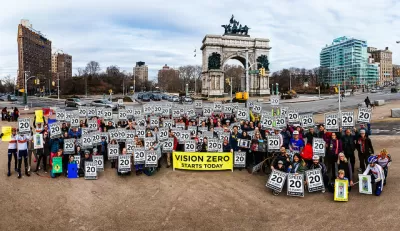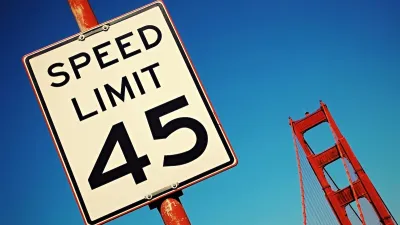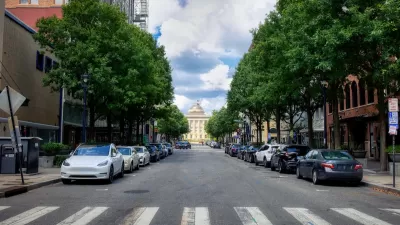Close to 50 governmental and nongovernmental organizations signed on to a pledge to take concrete action to reduce traffic deaths around the country.

A new federal initiative urges cities to take action toward the Department of Transportation (USDOT)’s National Roadway Safety Strategy, released last year. According to an article by Dan Zukowski in Smart Cities Dive, “Based on the safe system approach, the program’s five strategies focus on safer people, safer vehicles, safer speeds, safer roads and post-crash care.”
The initiative includes almost 50 government, industry, and nongovernmental participants that have pledged to take specific steps to reduce roadway deaths.
The commitments include:
- The National League of Cities will include up to 50 additional communities in its Safety First Challenge, along with adding local safety data resources, working with youth safety leaders and elected officials.
- The American Association of State Highway and Transportation Officials is updating its Highway Safety Manual with added research-based methods and more expansive pedestrian and bicyclist safety considerations.
- The League of American Bicyclists will provide technical assistance to local governments and work with states as they implement vulnerable road user safety, speed management and Complete Streets planning activities.
- The Vision Zero Network is developing a new series of resources and educational opportunities for local, regional and Tribal communities.
FULL STORY: US DOT launches roadway safety call to action

Study: Maui’s Plan to Convert Vacation Rentals to Long-Term Housing Could Cause Nearly $1 Billion Economic Loss
The plan would reduce visitor accommodation by 25,% resulting in 1,900 jobs lost.

Placekeeping: Setting a New Precedent for City Planners
How a preservation-based approach to redevelopment and urban design can prevent displacement and honor legacy communities.

Using Old Oil and Gas Wells for Green Energy Storage
Penn State researchers have found that repurposing abandoned oil and gas wells for geothermal-assisted compressed-air energy storage can boost efficiency, reduce environmental risks, and support clean energy and job transitions.

Washington State Plans Ambitious ‘Cycle Highway’ Network
The state is directing funding to close gaps in its existing bike network and make long-distance trips more accessible.

Homeowners Blame PG&E for Delays in ADU Permits
The utility says it has dramatically reduced its backlog, but applicants say they still face months-long delays for approvals for new electrical work.

Rethinking Wildfire Defense: How a Landscape Approach Can Protect Neighborhoods
Post-fire analysis of the Eaton Fire reveals that a landscape approach — including fire-resistant vegetation, home hardening, and strategic planning — can help reduce wildfire risk, challenging assumptions that trees and plants are primary fire hazards.
Urban Design for Planners 1: Software Tools
This six-course series explores essential urban design concepts using open source software and equips planners with the tools they need to participate fully in the urban design process.
Planning for Universal Design
Learn the tools for implementing Universal Design in planning regulations.
Borough of Carlisle
Caltrans
Heyer Gruel & Associates PA
Institute for Housing and Urban Development Studies (IHS)
City of Grandview
Harvard GSD Executive Education
Salt Lake City
NYU Wagner Graduate School of Public Service
City of Cambridge, Maryland





























